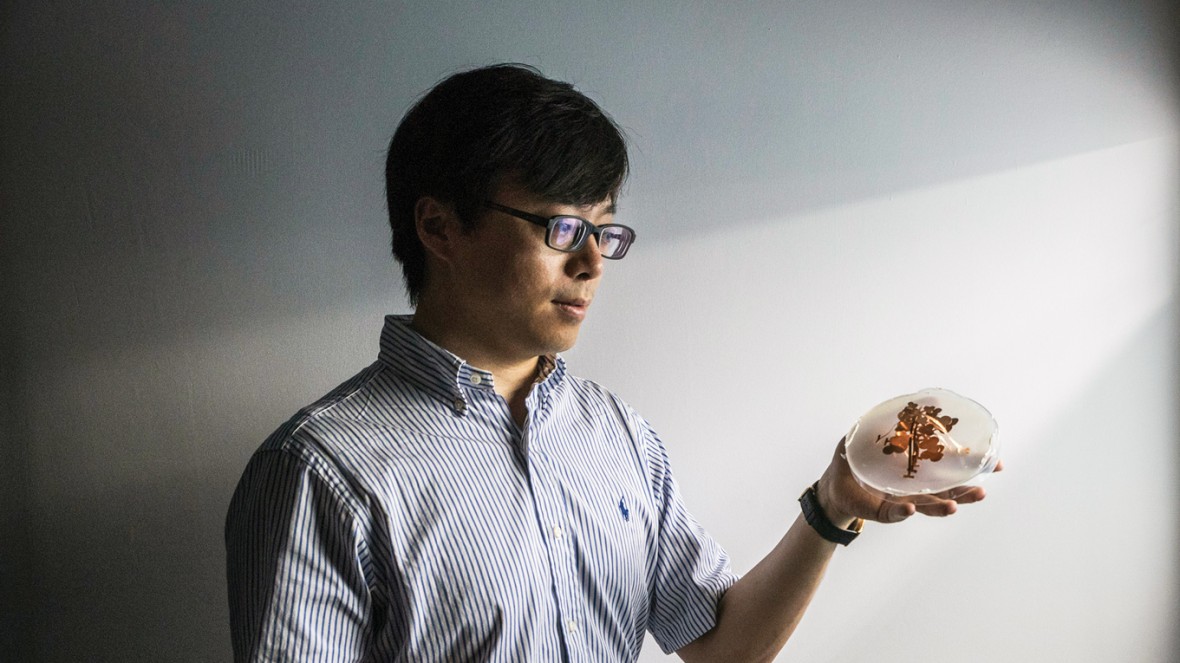
` Yihui Zhang, 30
Tsinghua University
Pop-up nanostructures make it far easier to fabricate very tiny shapes.
Yihui Zhang likes to invite visitors to his office to stretch a piece of highly elastic silicone that has a soccer-ball-like structure attached to it. Once the silicone is pulled taut from four corners, the three-dimensional structure becomes a two-dimensional pattern that looks like a wheel with many adjacent hexagons and pentagons in the center. When the silicone is relaxed again, the flattened pattern pops back into its three-dimensional shape.
With this trick, Zhang has solved the challenge facing many researchers: how to fabricate complex three-dimensional nanoscale structures. Although the demonstration is done at the macro level, the idea works with nanostructures, too: easily created two-dimensional patterns can be attached to a substrate stretched taut and then buckled into three-dimensional structures as the substrate is relaxed. This process works with a wide range of materials such as metals and polymers.
The technique could be used to create nanostructures for a variety of uses. Ultimately, Zhang hopes to develop a database or algorithm that allows researchers to easily map the three-dimensional structures they want onto two-dimensional precursors. “It’s a tool,” he says. “People from different disciplines can build their own innovations.”
—Yiting Sun
